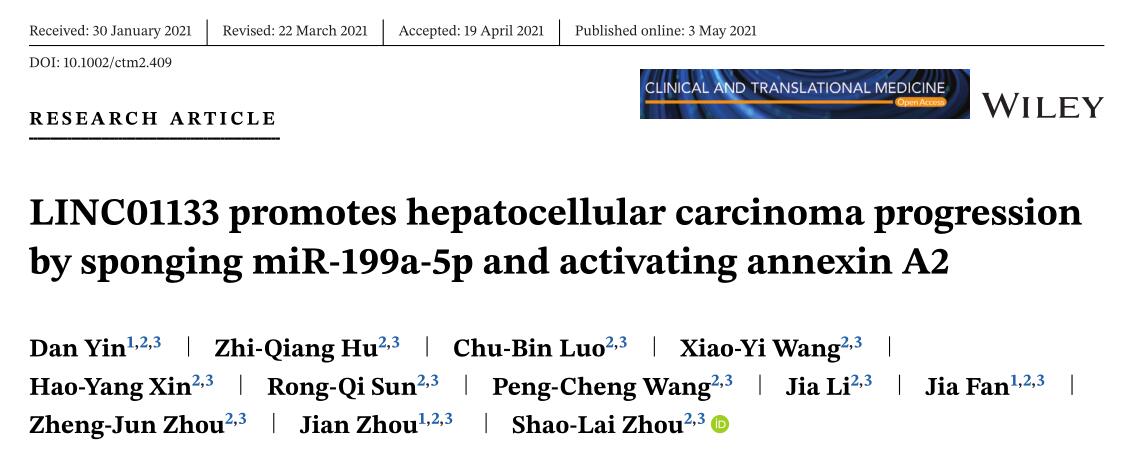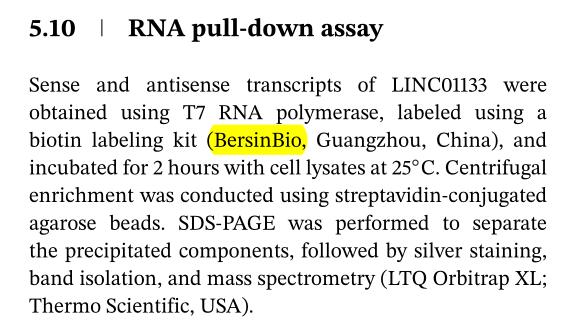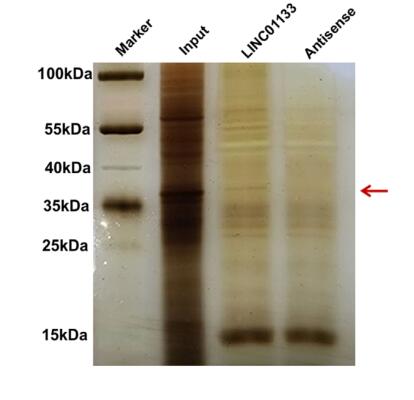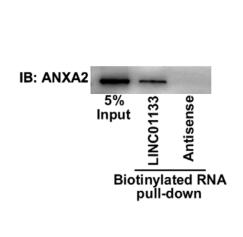
摘要
Background: Long noncoding RNAs (lncRNAs) are functionally associated with cancer development and progression. Although gene copy number variation (CNV) is common in hepatocellular carcinoma (HCC), it is not known how CNV in lncRNAs affects HCC progression and recurrence. We aimed to identify a CNV-related lncRNA involved in HCC progression and recurrence and illustrate its underlying mechanisms and prognostic value.
Methods: We analyzed the whole genome sequencing (WGS) data of matched cancerous and noncancerous liver samples from 49 patients with HCC to identify lncRNAs with CNV. The results were validated in another cohort of 238 paired HCC and nontumor samples by TaqMan copy number assay. We preformed Kaplan-Meier analysis and log-rank test to identify lncRNA CNV with prognostic value. We conducted loss- and gain-of-function studies to explore the biological functions of LINC01133 in vitro and in vivo. The competing endogenous RNAs (ceRNAs) mechanism was clarified by microRNA sequencing (miR-seq), quantitative real-time PCR (qRT-PCR), western blot, and dual-luciferase reporter assays. We confirmed the binding mechanism between lncRNA and protein by RNA pull-down, RNA immunoprecipitation, qRT-PCR, and western blot analyses.
Results: Genomic copy numbers of LINC01133 were increased in HCC, which were positively related with the elevated expression of LINC01133. Increased copy number of LINC01133 predicted the poor prognosis in HCC patients. LINC01133 overexpression in HCC cells promoted proliferation and aggressive phenotypes in vitro, and facilitated tumor growth and lung metastasis in vivo, whereas LINC01133 knockdown had the opposite effects. LINC01133 sponged miR-199a-5p, resulting in enhanced expression of SNAI1, which induced epithelial-to-mesenchymal transition (EMT) in HCC cells. In addition, LINC01133 interacted with Annexin A2 (ANXA2) to activate the ANXA2/STAT3 signaling pathway.
Conclusions: LINC01133 promotes HCC progression by sponging miR-199a-5p and interacting with ANXA2. LINC01133 CNV gain is predictive of poor prognosis in patients with HCC.
Keywords: Annexin A2; EMT; LINC01133; hepatocellular carcinoma; miR-199a-5p.



伯信合作技术:RNA pulldown
原文链接:10.1002/ctm2.409



